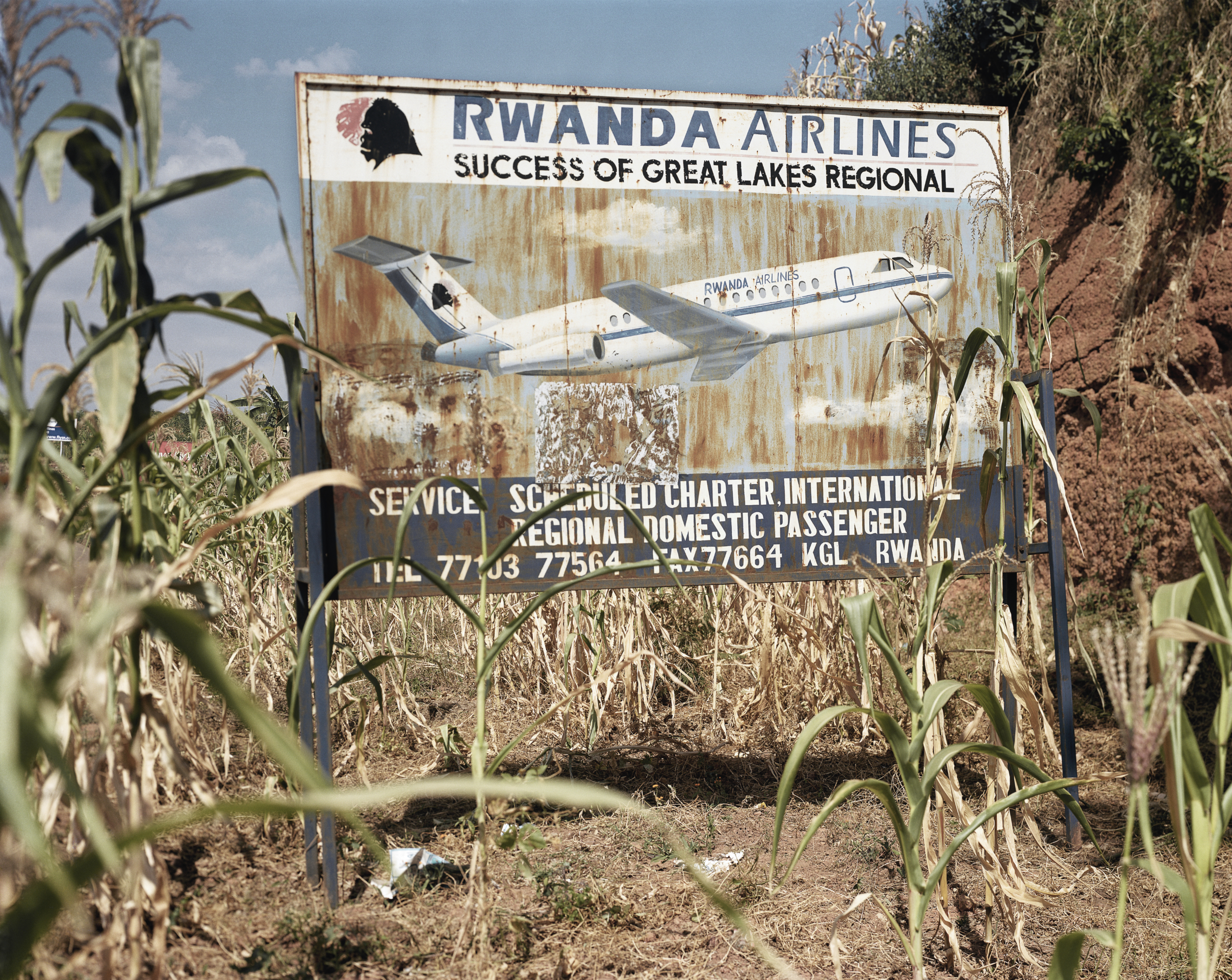
KIGALI INTERNATIONAL AIRPORT
There was a hurried exit.
Over a period of four days, starting on 9 April 1994, some 3 900 people of 22 nationalities left Rwanda with the help of European troops flown in for that purpose. The United Nations agencies, the aid and development agencies, co-operation missions and embassies shut their doors as the diplomats and western technical, training and expert advisers left Rwanda.
Over a period of four days, starting on 9 April 1994, some 3 900 people of 22 nationalities left Rwanda with the help of European troops flown in for that purpose. The United Nations agencies, the aid and development agencies, co-operation missions and embassies shut their doors as the diplomats and western technical, training and expert advisers left Rwanda.

GRAVE IN A FOREST, MURAMBI VICINITY
Bodies were concealed in every corner of the landscape, turning the fertile slopes of Rwanda into burial grounds. As soil erosion occurs, is the evidence continues to emerge.

MASS GRAVE AT THE CENTRE DE SANTE, KIMIRONKO
The wounded who sought medical help found killers waiting for them in clinics and hospitals. Many doctors and nurses were accomplices to the killing or participated directly. Tutsi patients were taken from the wards and hacked or shot to death.
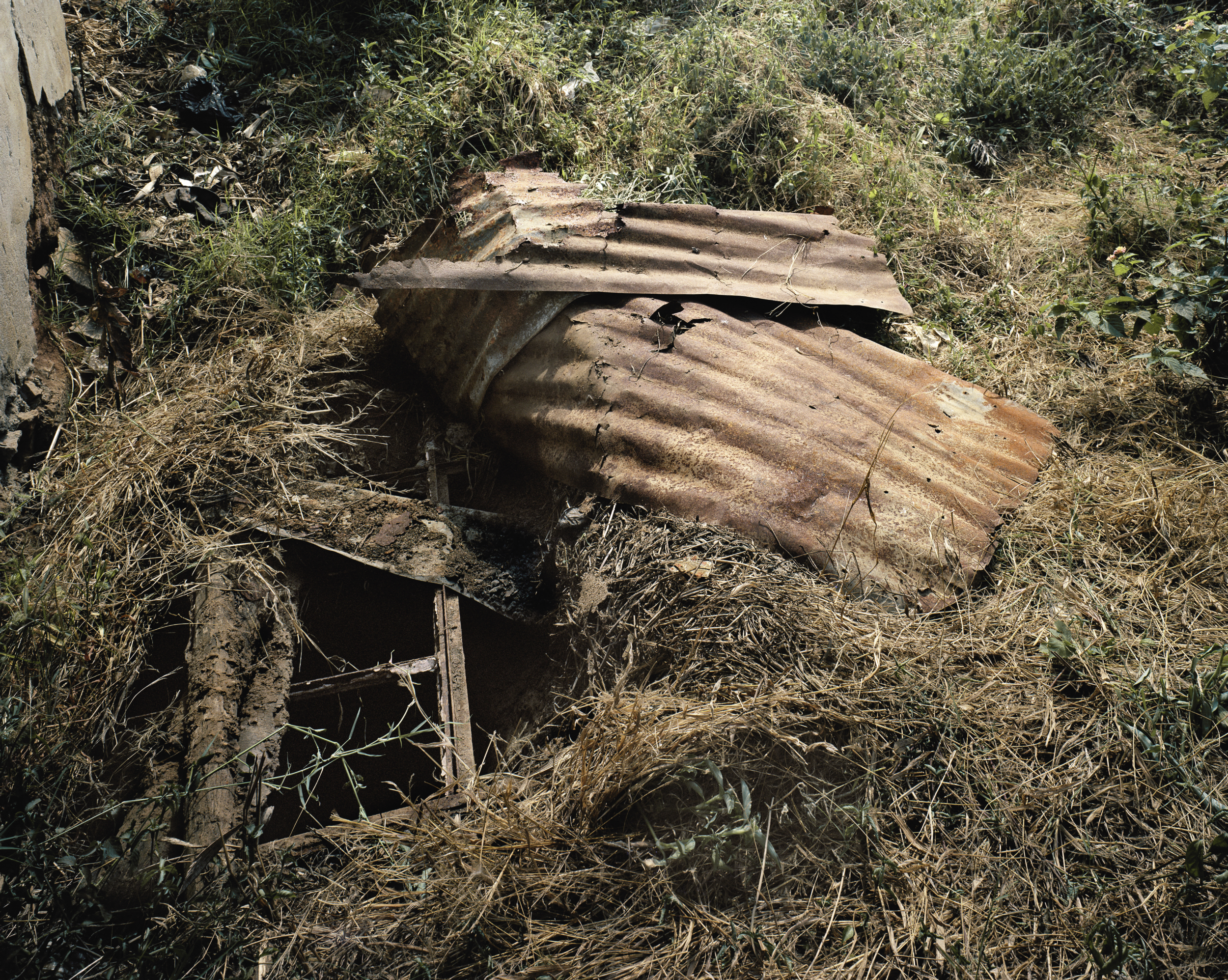
GRAVE IN A LATRINE, NYAMATA
Corrugated iron sheeting barely conceals a latrine hole into which approximately 56 bodies were thrown. Some people were buried in secluded places while others were left lying where they fell.
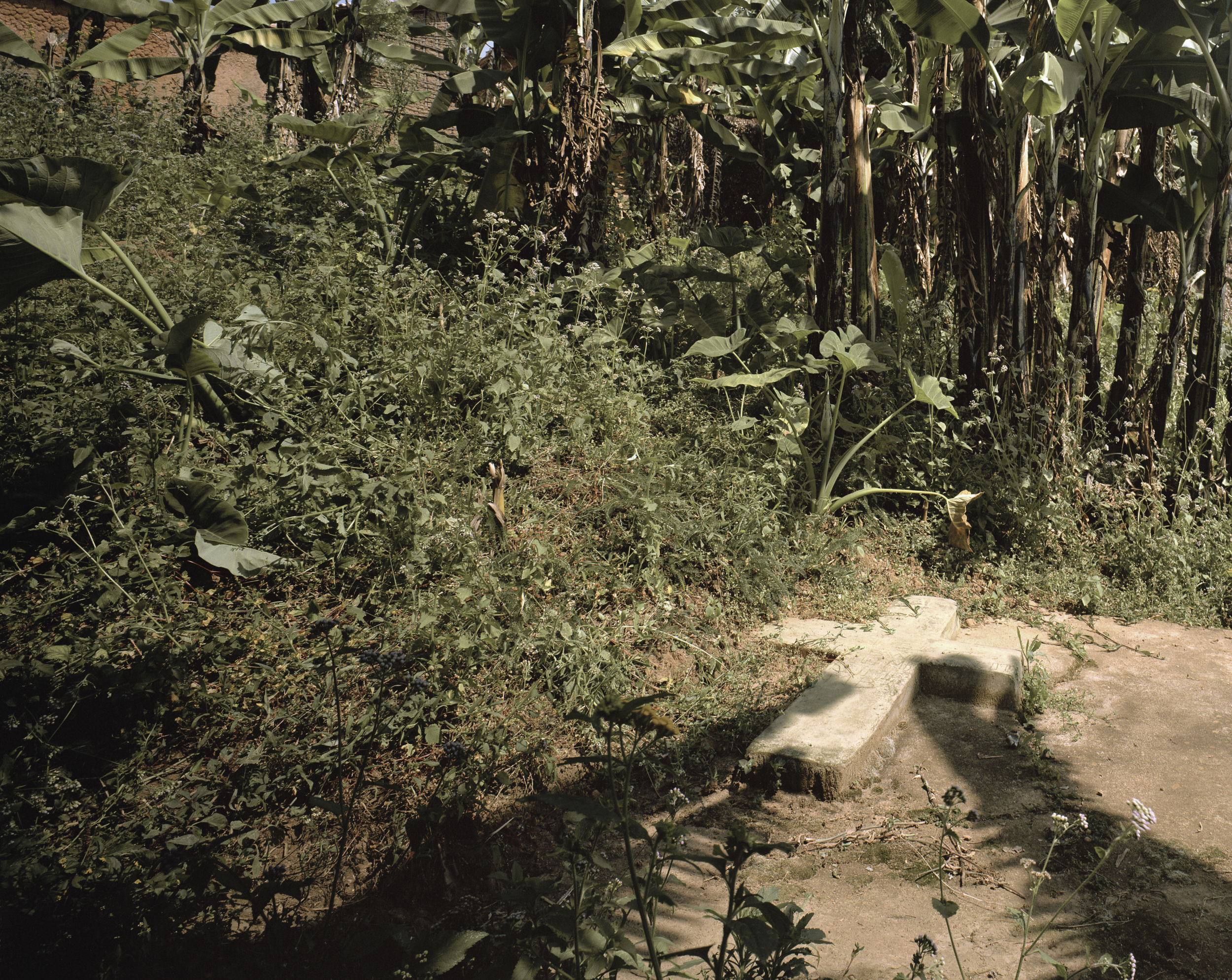
MEMORIAL AT A MASS GRAVE IN A LATRINE, NZEGA, GASAKA SECTOR
Killers disposed of their neighbours’ bodies in latrines. Sometimes stones were put on top of each body to prevent the escape of any victim left alive, or to hinder the extraction of remains.

TRACKS THROUGH A PLANTATION
Survivors were pursued everywhere. Those who tried to hide in banana plantations were hunted down, and sometimes plantations were cleared to deny even this possibility.

GENOCIDE SITE, GATWARO STADIUM, KIBUYE
Thousands of victims believed the guarantees given to them by government officials who urged them to congregate together to ensure their safety. In Kibuye it was Gatwaro soccer stadium that was offered as a refuge. Once in the stadium no one was allowed to leave and the water was cut off. The massacre began on 18 April, with grenades thrown into the crowds and machinegun fire coming from the surrounding hills. This lasted until there was no more ammunition. The militia then came onto the football pitch with their machetes and nail-studded clubs to make sure there were no survivors. They returned the next morning looking for the wounded to kill and bodies to loot. Some 2500 families were entirely wiped out on this playing field.

SURVIVOR VICTOR RUDASINGWA IN THE ARBORETUM, UNIVERSITY OF BUTARE
The militia arrived by bus from the capital and stayed in local hotels near Butare airport. On 21 April they were out on the streets using nail-studded clubs , hoes and machetes to kill their victims. Rwandan soldiers rounded up students in the university cafeteria and took those with Tutsi identity cards to the arboretum to be shot.

CLOTHES HANGING, MURAMBI TECHNICAL COLLEGE
People fled in the clothes they were wearing and took little with them; survivors wore the same clothes for months. Many victims were buried naked after their clothes were looted. These bloodied rags belonged to the victims of the massacre at Murambi, ,where an estimated 40 000 people were killed after having sought sanctuary at the hill-top technical college.

EMMANUEL MUGANGIRA, MURANBI TECHNICAL COLLEGE
Today Murambi is one of six national memorial sites. The caretaker, Emmanuel Mugangira, unlocks the doors of the classrooms and dormitories. They are filled with human remains. His family was killed here: his wife, his five children - the eldest 13 years old - his eight brothers and sisters. ‘Those who perpetrated the genocide sometimes say nothing happened here,’ says Mugangira.

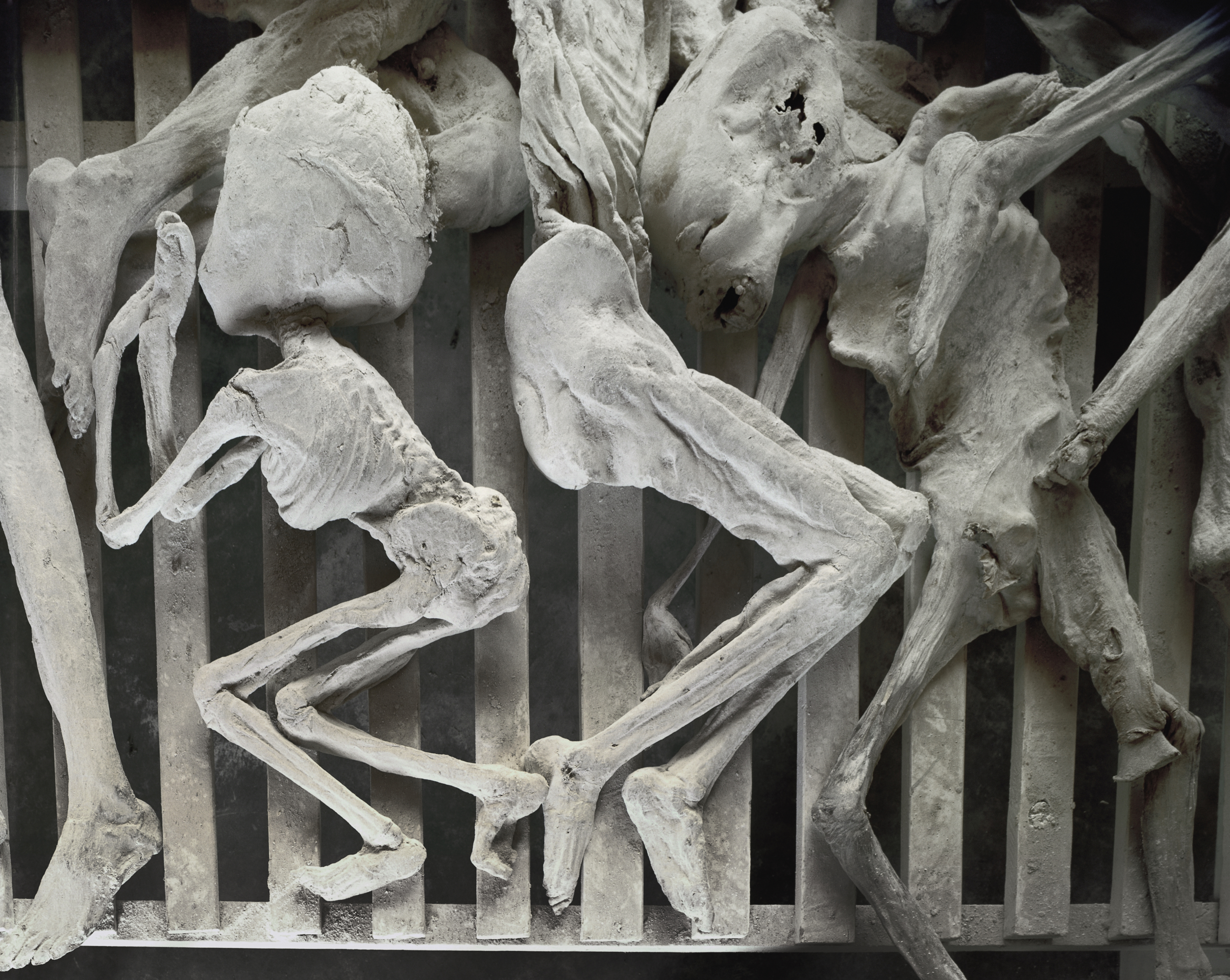
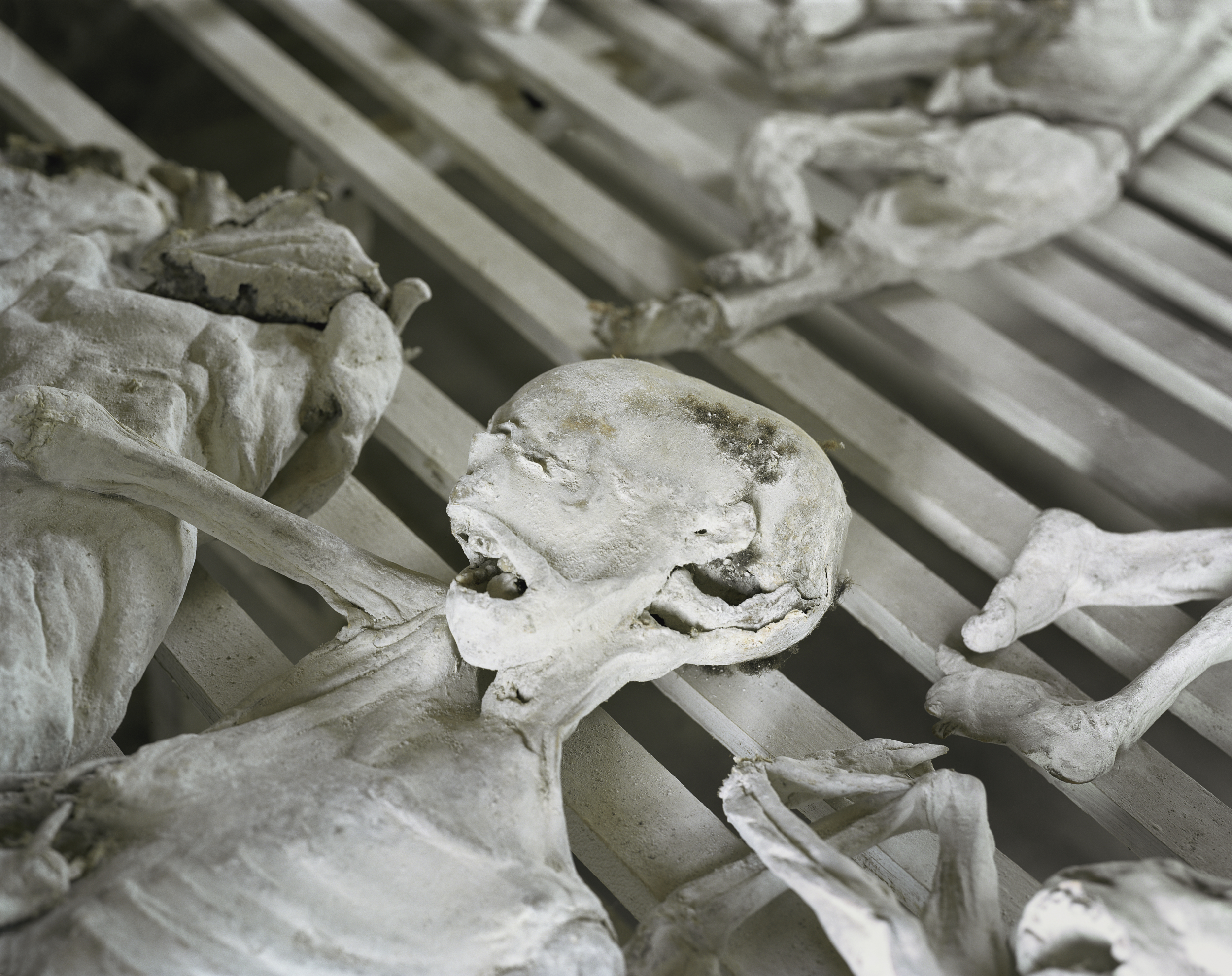
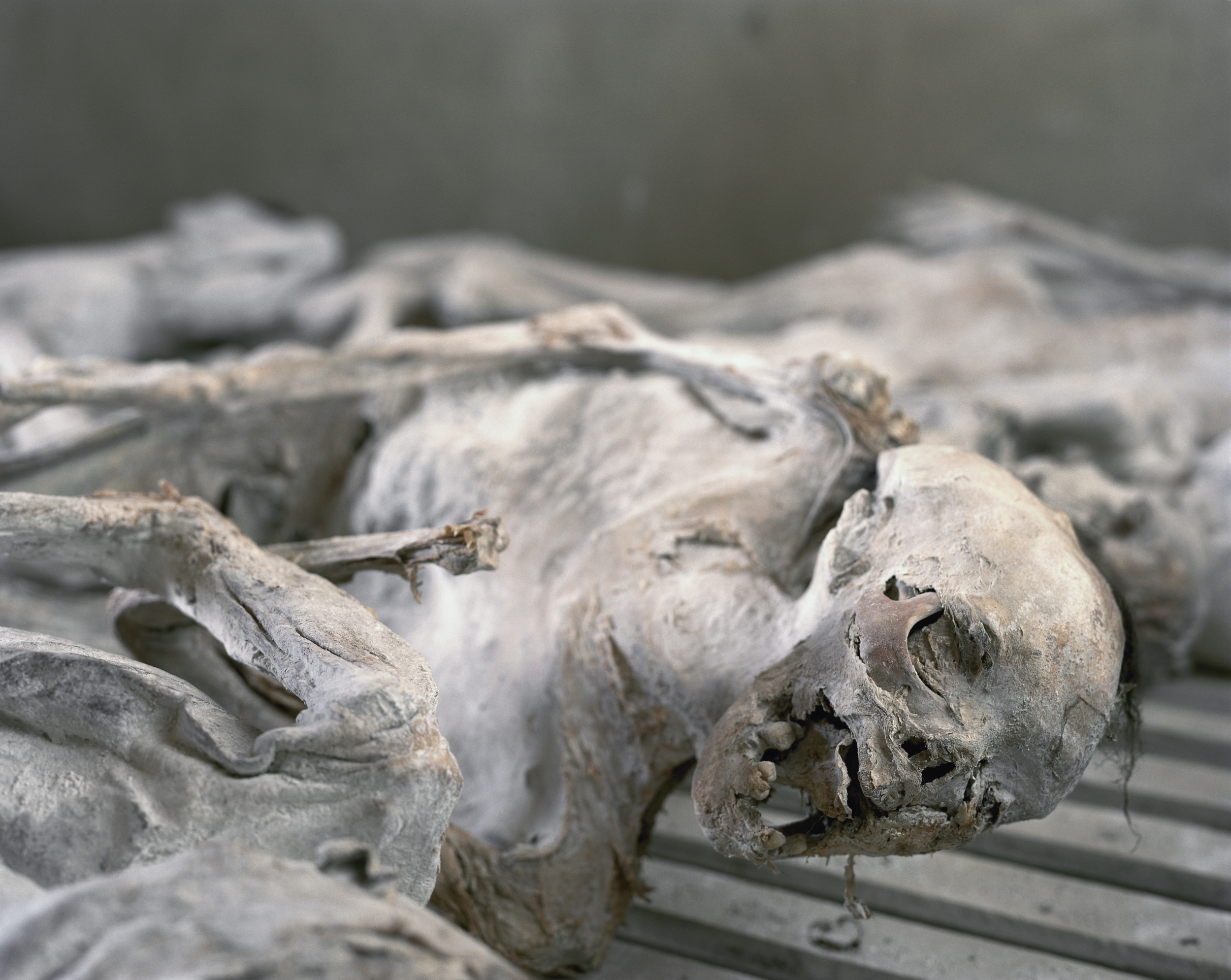
BODIES COVERED IN LIME, MURAMBI
No one will ever know the exact death toll at Murambi. Bodies were left all over the school grounds and filled the buildings. Piles of corpses were thrown into drainage trenches or bulldozed into pits. One mass grave was later covered in concrete by French soldiers billeted at the school who wanted a volleyball court.
Exhumations saw the lifting of 700 partly decomposed bodies from one of the trenches. These bodies were left out on display in the school dormitories. They were periodically covered in powdered lime commonly used to prevent infection. The contorted postures of the bodies are due to the way in which the bodies were originally buried. The layers of lime applied over the years have served to partly mummify the corpses and some human tissue is still visible from the tendons, muscles and ligaments; in some cases tufts of hair can be seen. The bodies show evidence of sharp instrument trauma where multiple machete blows split open heads or sliced off limbs, and hammers crushed skulls.
Exhumations saw the lifting of 700 partly decomposed bodies from one of the trenches. These bodies were left out on display in the school dormitories. They were periodically covered in powdered lime commonly used to prevent infection. The contorted postures of the bodies are due to the way in which the bodies were originally buried. The layers of lime applied over the years have served to partly mummify the corpses and some human tissue is still visible from the tendons, muscles and ligaments; in some cases tufts of hair can be seen. The bodies show evidence of sharp instrument trauma where multiple machete blows split open heads or sliced off limbs, and hammers crushed skulls.



SALON DE COIFFURE, LA MIGNORE, KIGALI
During the genocide, murals on the walls of hairdressing salons were defaced because they showed people who were considered to look like Tutsi. In Kabgayi, Gitarama, a statue of the Virgin Mary was destroyed for the same reason.
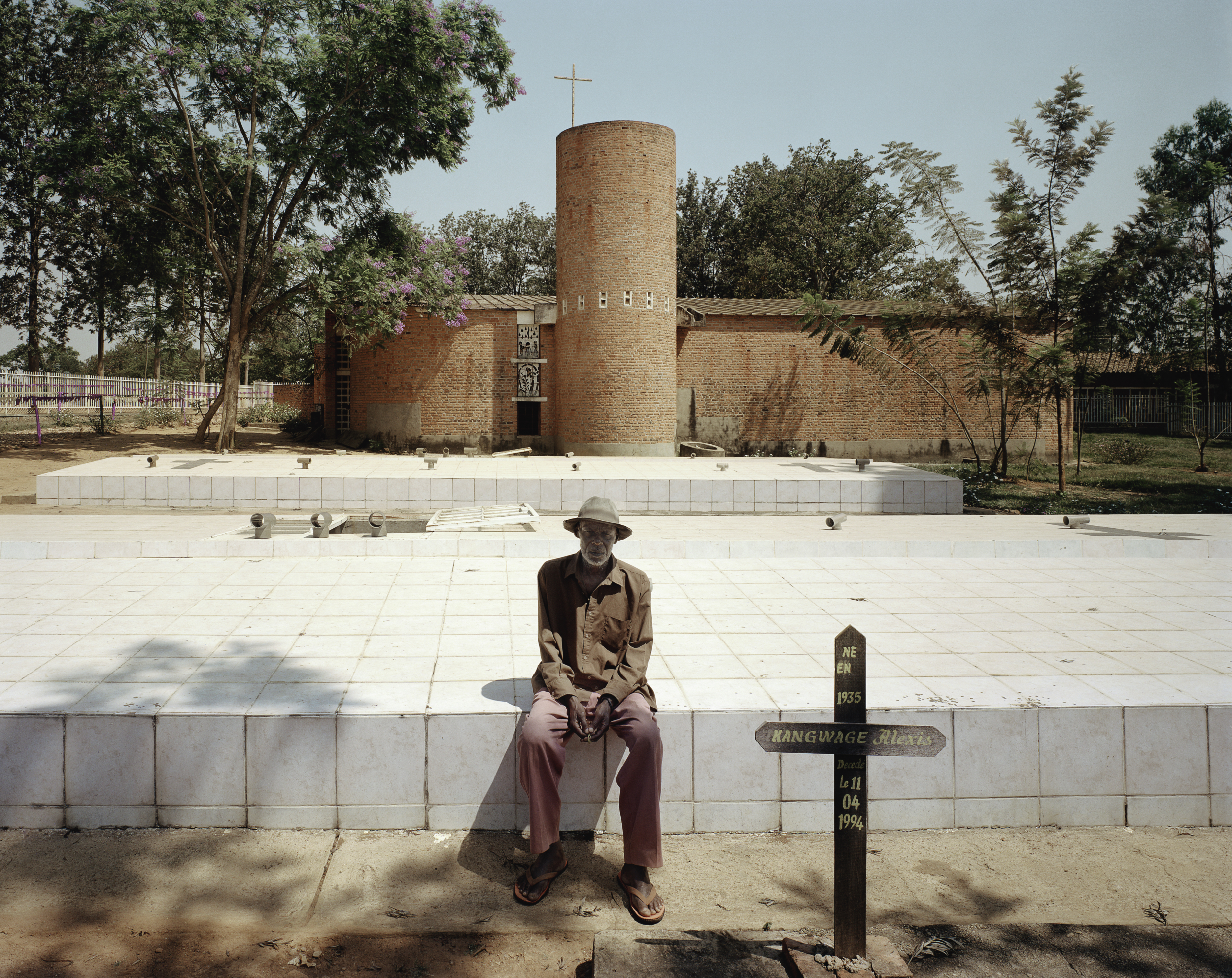
THARCISSE MUKAMA, NYAMATA CATHOLIC CHURCH
Tharcisse Mukama, a survivor and elder in his community, shows visitors to the stairs which lead to the crypt where his family is buried. On each side of a narrow corridor human bones are stacked on shelves; these are the remains of an estimated 50 000 people killed in the church and its vicinity, including the nearby maternity clinic.

NYAMATA CATHOLIC CHURCH
The church door was blasted open but much of the killing was achieved from outside as killers fired bullets and threw grenades though lattice brickwork and windows in the nave. The shrapnel tore upwards, and the roof in the church is peppered with holes that let in the daylight.

THE ALTAR AT NTARAMA CATHOLIC CHURCH
In the massacres which took place in Rwanda’s churches, some victims tried to reach the altar, believing no one could possible commit murder here. Some of the killers said that God had abandoned the Tutsi. For almost a century the church had been an integral part of Rwandan life. Bishops, priests and nuns, both Rwandese and foreign, were involved in Rwanda’s politics. The education system was created by the Catholic Church. According to a 1991 census, 90 percent of all Rwandans were Christian. In some churches the anti-Tutsi ideology was preached from the pulpit.

NTARAMA CATHOLIC CHURCH
The church at Ntarama was a traditional sanctuary –people had fled there during the previous attacks on Tutsi. The massacre took place on the morning of 15 April, after several hundred attackers including soldiers, gendarmes and Interhamwe carrying machetes, spears and clubs had arrived by bus from Kigali. The provincial governor of the Kigali-Rural Prefecture, Francois Karera, was later held criminally responsible for having instigated and participated in the extermination of the people of the Ntarama Church.



L’ HOTEL REBERO L’ HORIZON
Fundraisers were held in this once plush hotel to solicit donations for the Interhamwe, a paramilitary group of unemployed youths who were indoctrinated with an ideology of violence and hatred towards the Tutsi. After the genocide was over the hotel became a barrack for the soldiers of the RPF. A nearby memorial commemorates Rwanda’s politicians who were killed for opposing the genocide ideology.

KIGALI MEMORIAL CENTRE
The Kigali Memorial Centre features an extensive vault built into the hillside where the remains of an estimated 250 000 people are buried.

KIGALI MEMORIAL CENTRE
Since the memorial centre was established, it has been subject to two grenade attacks, in one of which a policeman was killed. The centre has subsequently been given 24-hour armed protection.

SITE OF A ROADBLOCK, KIBAGABA ROAD, KIGALI
The location of the roadblocks was often determined by government officials and they were manned by civilians, militia and sometimes military personnel. To serve on a roadblock was a national duty, the sole purpose to identify Tutsis and kill them.

SITE OF A ROADBLOCK, GATYAZO, GIKONGORO
Each person’s identity card was checked at the roadblocks. Anyone who simply looked like a Tutsi was killed. Some roadblocks were well organised with corpses piled neatly alongside. Others had piles of bodies cut in pieces. Tipper trucks sometimes came by with prisoners detailed to collect bodies from the streets. Roadblocks became chaotic with drunkenness, drug abuse and sadistic cruelty. On one stretch of road in Kigali there was a barricade across the road every 100 metres.

THE VIEW OVER LAKE KIVU FROM THE CATHOLIC CHURCH AND HOME ST JEAN COMPLEX, KIBUYE
An uncountable number of people were drowned in the rivers and lakes which were also used to dump rotting bodies. Evidence of genocide was there for the world to see as bloated bodies were swept downstream and out of Rwanda to emerge in the rivers and lakes of neighbouring countries. Bodies were washed up on the shorelines sometimes with heads and legs missing. Some women had their children still strapped to their backs.



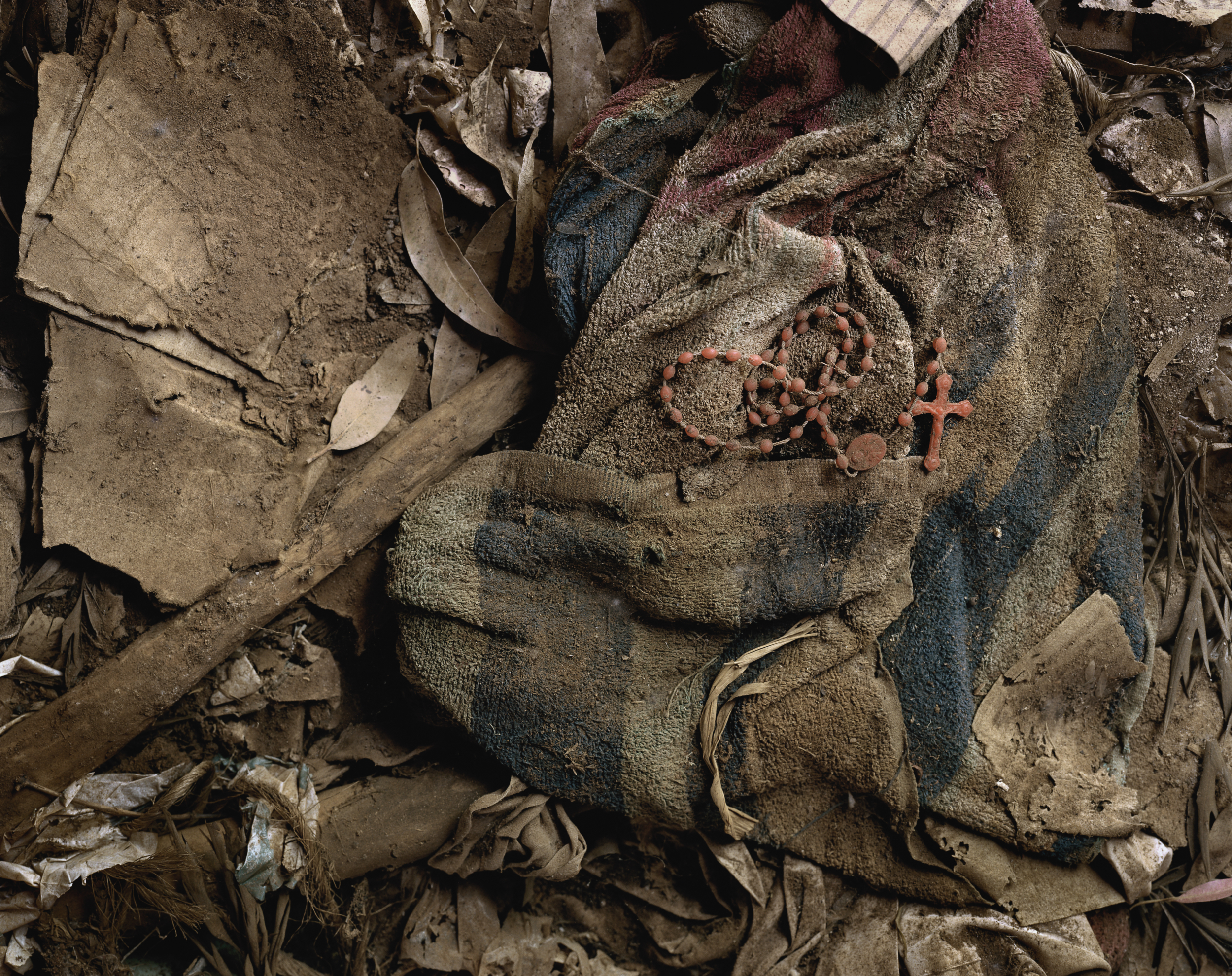

NTARAMA CATHOLIC CHURCH
After the massacre it was impossible to enter the church because so many corpses were piled behind the door. The view through the window shoed bodies on top of each other and strewn among the pews. Later, some of them were eaten by wild dogs and vermin; eventually only personal possessions and bones remained.